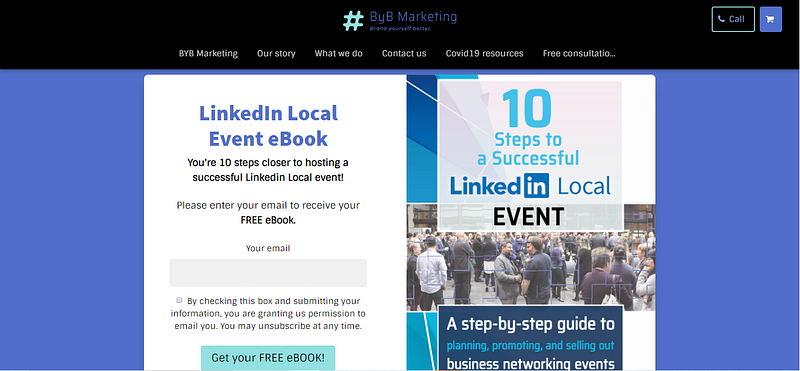
More often than not, the PC or mobile phone somebody is using is an Apple or perhaps a Samsung. All the vehicles could be Fords, or there might be several BMWs.
Your favourite influencers on social media? Chances are that they are sponsored by brands to promote their products.
This is called product placement, which is a form of advertising but attempts to persuade in a far less obvious way than traditional advertising.
What is Product Placement?
Also known as embedded marketing, product placement is a multi-billion dollar industry.
Companies pay to have commercial content such as their brand, products or services incorporated into non-commercial content such as film, TV or other mainstream media. The idea is to use the placement whilst maintaining realism with context or plot.
The audience gets exposed a brand, product or service being consumed in its natural setting; positively influencing their perceptions and opinions of the brand. They are not meant to notice that it is advertising — that is the power of product placement.
“In its simplest form, product placement consists of an advertiser or company producing some engaging content in order to sell something.” (Falkow, 2010)
Product placements can be subtle or more obvious. Ranging from an unobtrusive appearance within the setting, or more prominent incorporation and acknowledgement of the brand as part of the plot.
The product itself does not have to be shown; it could be a logo, signage or brand name for example. More subtle product placement could avoid showing the brand itself but instead showing a distinct colour scheme or other feature synonymous with that brand.
Consumer products such as electronics (Apple products for example) or automobiles, as well as service placements (such as McDonald’s), that target ultimate household consumers are the most common placement, but business-to-business promotions are becoming more common.
The vast number of media that use product placements include films, television programs, celebrities/influencers via social media, video games, blogs, music videos, concerts, magazines, books, comics, musicals and plays, live sport, radio, the internet, and mobile phones.
Product placement on television has grown rapidly to try and combat people skipping traditional commercial breaks. According to Priceonomics, television accounts for just over 70 percent of all paid product placements, and approximately 75% of all broadcast-network shows feature some form of product placement.
Films can often use multiple brands as product placements, Superman: Man of Steel is reported to have used $160 million worth of product placements promotions with over 100 brands.
“Since Unilever’s deliberate insertion of Sunlight Soap into several early Lumière films of the late 1890s, the practice of placing branded products within films for commercial purposes has developed into a distinct promotional tool.” (De Gregorio & Sung, 2010)
A Brief History of Product Placement
Although the term product placement was only created to describe this practice as recently as the 1980s, it is not a new practice. Instead, dating back to the first appearance of brands in Lumière films in 1896.
Product placement was not always monetised — many of the product placement deals were cash-free; instead, the arrangement was often reciprocal, items were borrowed and used as props by studios and television networks, reducing the cost of production. Products could be moved as well as selling movie tickets.
Commercial product placements were integrated into the creation and marketing of mass media content as early as the 1920s. The first spurt of popularity came in the 1950s, where tobacco companies tried to glamorise smoking cigarettes in TV and film.
In the 1980s, product placements became widely used after E.T. followed a trail of Reese’s Pieces out of the woods, resulting in a reported 65% increase in profits for Hershey’s.
“In E.T. the Extra-Terrestrial, the alien followed a trail of Hershey’s Reese’s Pieces to his new home. The movie was a hit, sales of Reese’s Pieces increased dramatically, and to some the product placement industry was born.” (Newell, Salmon, & Chang, 2006)
The Benefits of Product Placement
This fusion of advertising and entertainment helps brands to reach and engage with many of their target audience.
Because many people find traditional ads are annoying or irrelevant, it is estimated that two-thirds of TV viewers mute or skip ads. A major benefit of product placement is they cannot be skipped — they are embedded into the TV program, movie or other media itself.
The brand is often associated with the characters or context of the placement, so they must match to create a compatible match, which usually achieves positive evaluations.
Brands placed with attractive characters or settings can often be more appealing to the audience/consumers. This can be attributed to the ‘halo effect’, where a positive association with a show or person creates a positive association with the corresponding product or brand.
Viewers can become emotionally invested in the storyline in which a brand is presented. Because of this, the placement can encourage purchase intent.
When a placement is integrated seamlessly into a piece of media, the brand is seen in context, so it markets to consumers less directly. This means consumers’ persuasion knowledge is less likely to be triggered; this is a barrier that consumers put up to resist persuasion attempts from marketing that is too obtrusive.
Product placements can also boost brand recognition — the audience is also more likely to be able to recognise and name a brand after seeing it in product placement.
A study by Williams, Petrosky, Hernandez, & Page Jr (2011) found that just over 57 percent of TV viewers recognized a brand in placement when the brand also was advertised during the show.
The final major benefit is that movies and TV programs can be watched many times over several years, so their value is not limited to when it is originally aired.
“Viewers are able to correctly recognize brands placed in films and consumers do not really mind seeing products placed in motion pictures.” (La Ferle & Edwards, 2006)

How Product Placement Works
Product placement is all about context. To present a product or service in a way that will produce positive feelings towards that brand and hopefully influence peoples’ buying behaviour to purchase the brand. This connects with the audience in a more natural way than advertising when consumers are marketed to directly.
Product placements can be initiated directly through the firm’s marketing team suggesting their products to a studio or producers of a TV/Movie, or it could go the other way. Some companies and agents work as an intermediary to match companies with product placement opportunities. The brands in placements should be matched as closely as possible with the projected target audience of that piece of media.
Because of this potential influence over an audience, product placement should be ethical. The placement of brands of tobacco or alcohol for example can be viewed as unacceptable by much of the audience, especially in content created for youth.
There are two main forms of product placements: visual and verbal.
A visual placement involves placing a brand into a piece of media, so it is viewed. It could be an advertising hoarding in the background of a shot, or it could be of more importance in a scene, such as a cast member eating a packet of branded potato chips.
A verbal placement refers to the brand being mentioned in dialogue. There are varying degrees of audio placement, depending on the context in which the product is mentioned, the frequency with which it is mentioned, and the emphasis placed on the product name. Purely verbal placement we are called script placement.
A plot placement that relies on placing the brand both on the screen and in the conversation provides an opportunity for both verbal and visual encoding, whereas the other situations would activate only one form of encoding.
If a brand’s product becomes part of the plot -playing a major place in the storyline of building the persona of a character, this is a plot placement. Where a brand is identified with a character, e.g. James Bond and his Aston Martin, this is high intensity. A brief mention and appearance on screen low intensity.
Based on the coding redundancy hypothesis (See Paivio 1971), “…memory increases directly with the number of alternative memory codes available for an item”. Visual and audio activate different codes, and therefore different combinations of screen and script placement vary in effectiveness and brand recall.
“Virtual product placement” has been used to insert products and/or advertisements into portions of a media stream, where the products and/or advertisements may not actually exist.” (Gajdos & Pettersson, 2011)
The Digital Age of Product Placements
Advances in digital editing technology allow producers to update existing placements or create new ones in post-production, sometimes changing items used in shows long after they were filmed.
In live sports broadcasted to viewers, an advertisement on a billboard can be created where the advertisement is different than what physically exists. It may be a different ad or there might not even be an advertisement there in the first place.
On TV and in movies, virtual product placements can be inserted after the movie has been produced. Examples of this could be an advertising sign inserted into the background of a scene advertise a brand, or a beverage a person is drinking being altered to display a specific brand.
With advances in AI, product placements can be inserted into a media stream based on information about the consumer watching it, meaning brands relevant to that individual can be used, becoming more targeted to their personal interests.
Product placement has exploded on social media in the form of influencer marketing. An influencer is a social media personality with a following, who are paid to include products in their content to boost that brand’s popularity with their following. If the following of an influencer matches the target market of a brand, then they are a good fit.
Influencer marketing can range from a small mention in a post to the topic of a piece of content. The more obvious the product placement, the more it is deemed to be considered too ‘commercial’ by the followers of that social media influencer and the less effective it is likely to be.
“The extent to which the placement is prominent, whereby more prominence seems to evoke more negative reactions.” (Ewers, 2017)
Product Placement in Retail Settings
Product placement not only applies to media — but it can also apply to physical retail shop space. Brands will pay top dollar for prime space on the retail floor and shelves. This includes large endcap (end of an aisle) displays, the area next to the register where you checkout, or having item at eye level on the shelves and limiting shelf space their competitors — known as a slotting or shelving fee.
Large brands pay good money for this premium shelving space, this makes it harder for small brands and new businesses to break into the commercial retail market.
In summary, product placement is when a company pays to have commercial content such as their brand incorporated into a piece of media such as a film, or TV program, to expose it to the audience which is usually a good fit with their target market.
This aims to positively influence their perceptions and opinions of the brand in a less obtrusive way than traditional advertising.
This article has explored product placement, how it works and the benefits of using it as a marketing strategy.
Thank you for reading.
I hope you enjoyed the content and learnt something new.
This was initially posted on the BYB Marketing Blog - https://brandyourselfbetter.com/blog/post/197065/how-product-placement-puts-your-brand-in-front-of-your-target-customers





